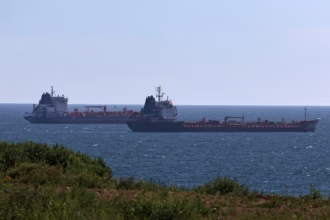Introduction to Radiant Cooling Systems:
A form of energy-efficient air conditioning system known as a radiant cooling system uses radiative heat transfer to cool a structure. These mechanisms transport heat from the air to the building’s floors, walls, and ceilings. As a result, there is less need for air conditioning because the optimum room temperature is maintained. Due to their capacity to save energy costs and enhance comfort, radiant cooling systems are growing in popularity in India.
- Introduction to Radiant Cooling Systems:
- Factors Affecting Radiant Cooling System Costs:
- Cost of Installing Radiant Cooling Systems in India:
- Cost of Operating Radiant Cooling Systems in India:
- Benefits of Installing Radiant Cooling Systems:
- Government Incentives for Installing Radiant Cooling Systems:
- Maintenance Costs for Radiant Cooling Systems:
- Conclusion:
Factors Affecting Radiant Cooling System Costs:
A number of variables, such as the type of system being installed, the size of the building, the environment, and the accessibility of local energy sources, affect the price of constructing a radiant cooling system in India. Expenses for manpower and materials must also be considered. Local energy costs and government incentives are additional significant considerations that will impact the system’s final cost.
Cost of Installing Radiant Cooling Systems in India:
Depending on the type of system, the size of the structure, and regional energy costs, the cost to install a radiant cooling system varies in India. According on the size of the building and the number of rooms, the price to install a radiant cooling system typically ranges from Rs. 20,000 to Rs. Depending on how difficult the installation is, adding a larger system can cost more than this.
Cost of Operating Radiant Cooling Systems in India:
The cost of running a radiant cooling system in India will be influenced by both the system’s efficiency and the cost of energy there. A radiant cooling system’s monthly operating costs typically fall between Rs. 200 and Rs. 1000. If the system is not well maintained or if energy rates in the area are high, this cost can be higher.
Benefits of Installing Radiant Cooling Systems:
Numerous advantages come with installing a radiant cooling system in India, such as cost savings on maintenance and enhanced comfort. Given that a radiant cooling system doesn’t need much energy to cool a structure, the energy savings from such a system can be substantial. A radiant cooling system’s enhanced comfort can also boost employees’ productivity in hot environments.
Government Incentives for Installing Radiant Cooling Systems:
To promote the installation of radiant cooling systems in India, the Indian government provides a number of incentives. Tax credits, subsidies, and grants are a few examples of these incentives. States provide different incentives, so anyone interested in learning more should get in touch with their local government offices.
Maintenance Costs for Radiant Cooling Systems:
Depending on the kind of system, the size of the structure, and the installation’s complexity, radiant cooling system maintenance costs in India can vary. The average monthly maintenance expenditures might be between Rs. 500 and Rs. 2000. To preserve the system’s effectiveness and lifespan, routine maintenance is crucial.
Conclusion:
Energy savings, increased comfort, and lower maintenance expenses are just a few advantages of radiant cooling systems. The type of system, the size of the building, and the cost of electricity in India all play a role in how much it will cost to install a radiant cooling system. Depending on the system’s performance, the monthly cost to operate a radiant cooling system in India might be anywhere from Rs. 200 and Rs. 1000. Numerous incentives are provided by the Indian government to promote the construction of radiant cooling systems in India. In India, radiant cooling system maintenance fees can be as high as Rs. 2000 per month.






